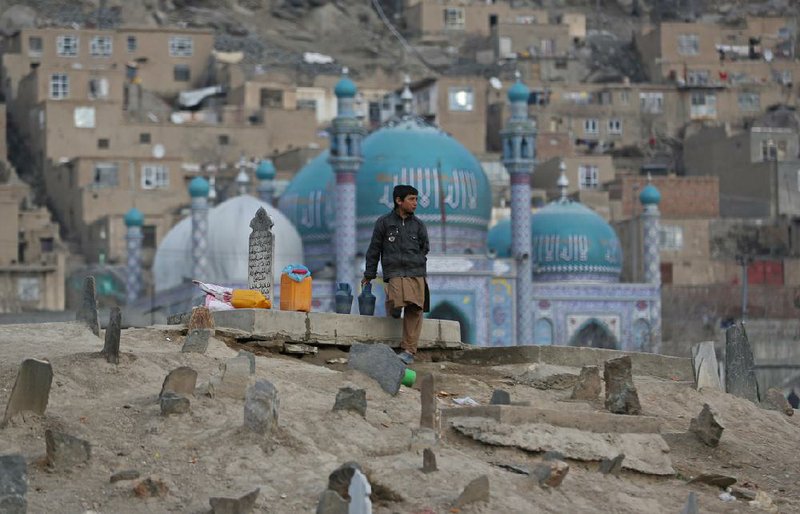WASHINGTON - U.S. and NATO military planners, facing continued political uncertainty about whether foreign troops will remain in Afghanistan after December, have drawn up plans to deploy a force this summer that is tailored to assume a training mission in 2015 but is also small enough to withdraw quickly if no deal for an enduring presence is reached, alliance officials said.
With President Hamid Karzai of Afghanistan refusing to sign security agreements approving a presence for U.S. and NATO troops after 2014, allied military planners have been forced to prepare for both success and failure of proposals for a continuing mission to train, advise and assist Afghan forces after combat operations officially end this year.
The decision on whether to extend the foreign military presence is a political one, and it will be decided first by Karzai and then by President Barack Obama and the elected leaders from NATO nations. The process has produced vitriol in Kabul, the Afghan capital, and deep concern in Washington and allied capitals.
The delays have complicated military planning, since the governments of nations that contribute troops must approve any sustained deployments - and the required financing - months in advance, with a number of deadlines for finishing an agreement already long passed.
In preparing the mechanics of this summer’s regular troop rotation, U.S. and NATO military commanders have set in motion a plan designed to give the alliance’s political leadership maximum flexibility, according to senior NATO officials.
These deployment plans would put in place a coalition military force sufficient to carry out a training mission beginning on Jan. 1 if Karzai relents, and small enough for an exit by Dec. 31 if political stalemate results in the so called zero option, alliance officials said.
As of Friday, there were about 36,500 U.S. troops and about 19,000 other allied forces in Afghanistan.
The alliance has approved the concept for a post-2014 training and assistance force of 8,000-12,000 troops, two thirds of them American, based in Kabul and in four hubs in each compass corner of Afghanistan to carry out a follow-on mission, named Resolute Support.
This summer, as the United States and coalition nations send in troops for the next round of deployments, a force of that size, based in those locations and having the required skills, will be put in place as part of the overall alliance presence to complete the official combat mission this year.
“We will use the arrival of forces in July to tailor the force so it looks like what it needs to look like in that Resolute Support mission,” a senior NATO official said. “So it’s going to be there.”
The total allied deployment in the summer months will perhaps remain 10,000 troops larger than designed for a post-2014 mission, so “between July and October we will shed weight,” the NATO official said. “We will start to shrink the perimeter, figuratively speaking, and we will get to the Resolute Support number.”
Many nations are watching with concern as Karzai demurs on signing a deal with Washington - a requirement for a similar deal with NATO - because the efficient and lawful disbursement of billions of dollars of pledged international assistance is viewed as dependent on oversight by foreign troops in a country known for corruption.
U.S. intelligence agencies are also concerned that if U.S. troops pull out of Afghanistan, they could lose their air bases for drone strikes against al-Qaida in Pakistan and for responding to a nuclear crisis in the region.
In other news, with billions of dollars in U.S. aid increasingly flowing straight into Afghan government coffers, the United States hired two global auditing firms - KPMG and Ernst & Young - three years ago to determine whether Afghanistan could be trusted to safeguard the money.
The findings were so dire that U.S. officials fought to keep them private. But the money has continued to flow, despite warnings from the auditors that none of the 16 Afghan ministries could be counted on to keep the funds from being stolen or wasted.
Problems unearthed by the auditors are detailed in a report to be published today by the Special Inspector General for Afghanistan Reconstruction, a U.S. government watchdog.
Aid from Western countries pays most of the Afghan government’s expenses. The United States’ contribution is by far the largest, and Washington has pushed in recent years to route more of it directly to the Afghan government and less through programs managed by U.S. officials.
John Sopko, the special inspector general, called the strategy of delivering more direct assistance “the biggest gamble with taxpayer money that USAID has ever made,” referring to the U.S. Agency for International Development.
His report, provided to The New York Times before its public release, acknowledged that the aid agency was simply following a policy set by senior Obama administration officials and that direct aid payments to the Afghan government would probably continue no matter what problems were found. His chief recommendation was that the agency apply more pressure on Afghan ministries to clean up their operations.
The agency, which has grown accustomed to harsh reports on its work in Afghanistan from the inspector general, characterized the latest report as one with smoke but no fire. The agency said that despite all the warnings about risks, the report outlined no specific instances of fraud.
Information for this article was contributed by Matthew Rosenberg and Azam Ahmed of The New York Times.
Front Section, Pages 2 on 01/30/2014
